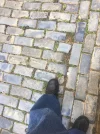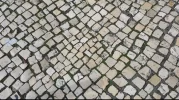On several posts and writings about the Camino Portugués, have read about the famous cobblestones.
Our (wife and myself) next planned Camino would be the Portugués. We are original from the Caribbean, and cobblestones were used to pave the streets in many of the original settlements. These stones were used as ballasts on the ships that came from the “Old World”. They were unloaded and the ships loaded with cargo from the “New World”.
We grew used to walk on these cobblestones, taking precaution when wet as they become slippery (specially on inclines).
Attached is a photo of the cobblestones that can be found in Old San Juan, Puerto Rico. I have seen them in Habana, Cuba and Santo Domingo, Dominican Republic.
Does the cobblestones in the attached picture compares to the ones in Portugal.
Thanks,
Iván































